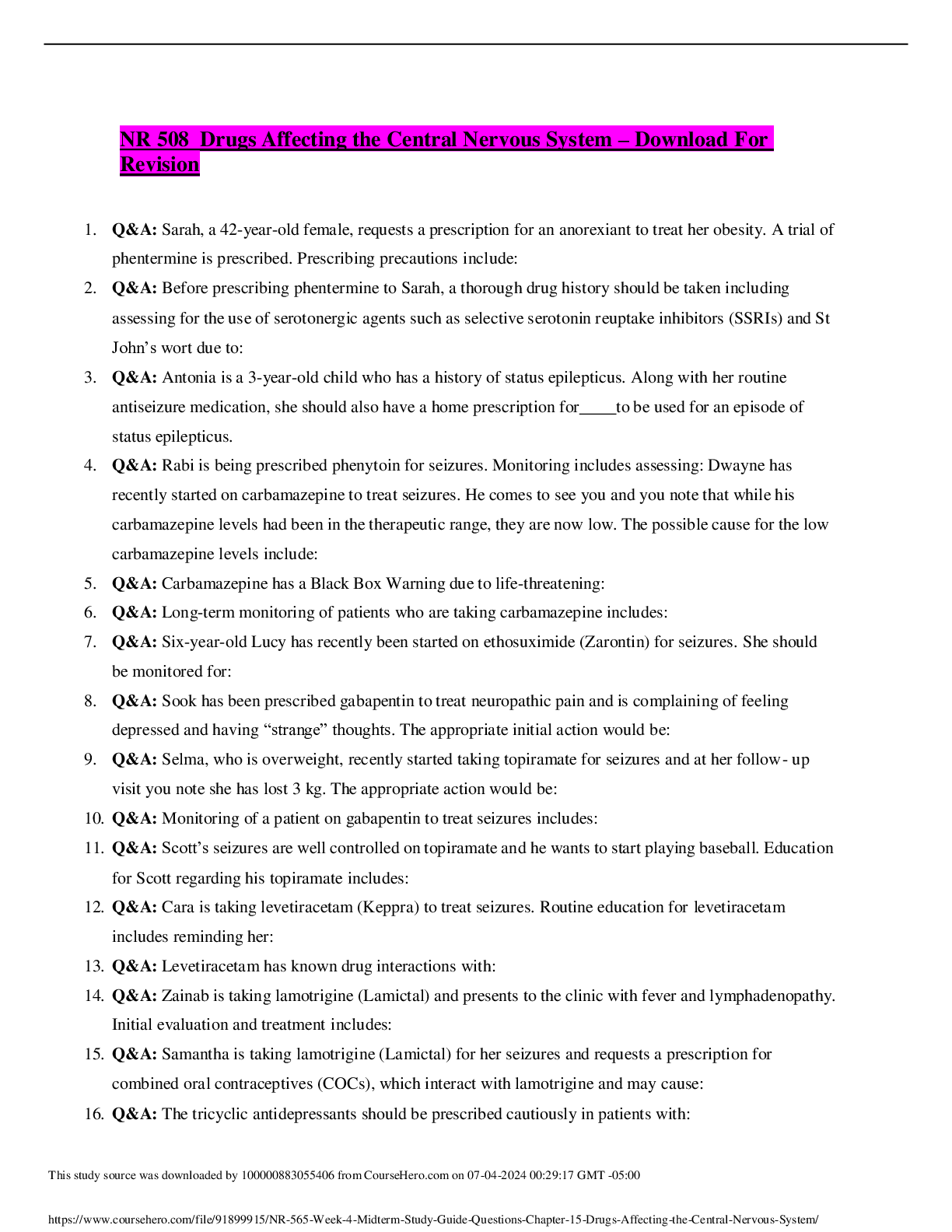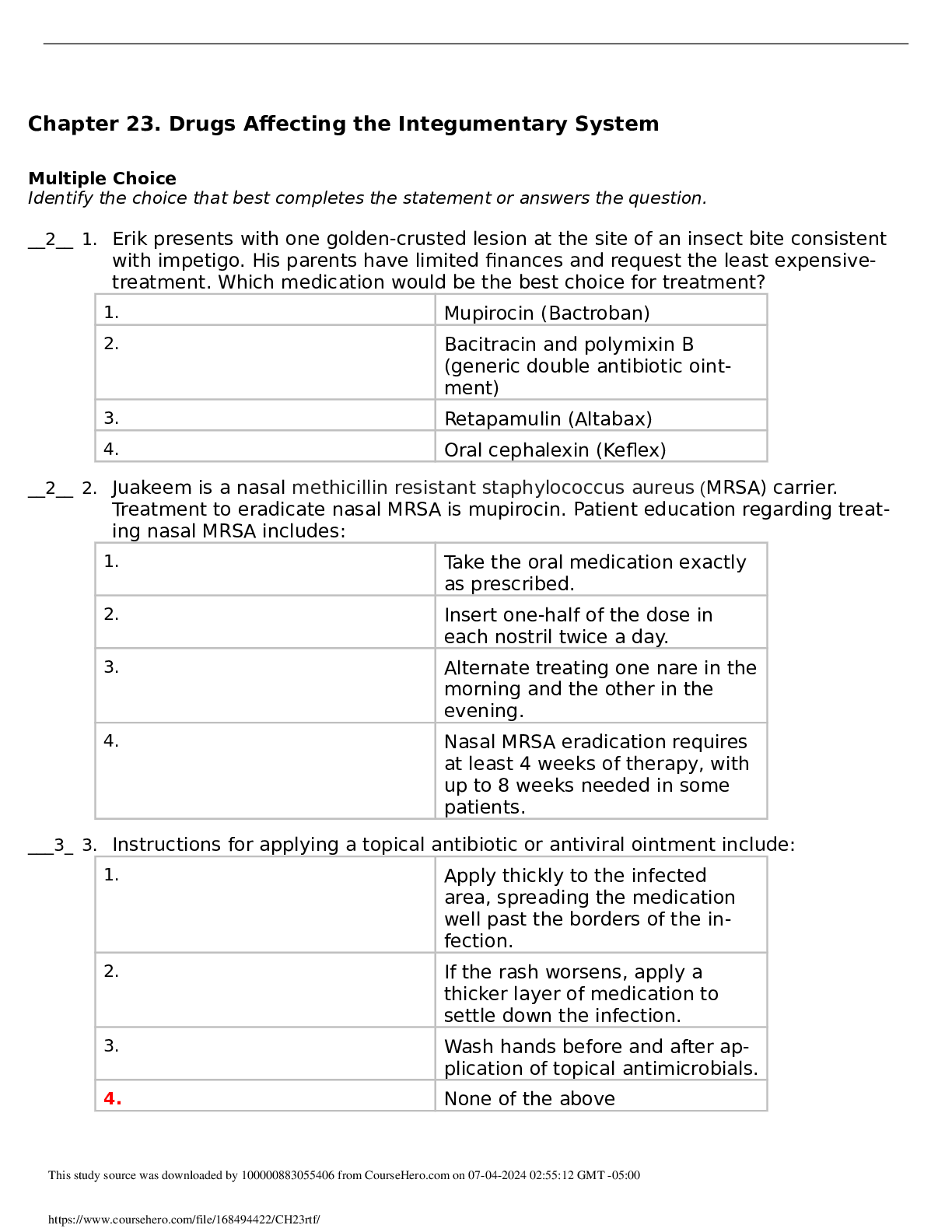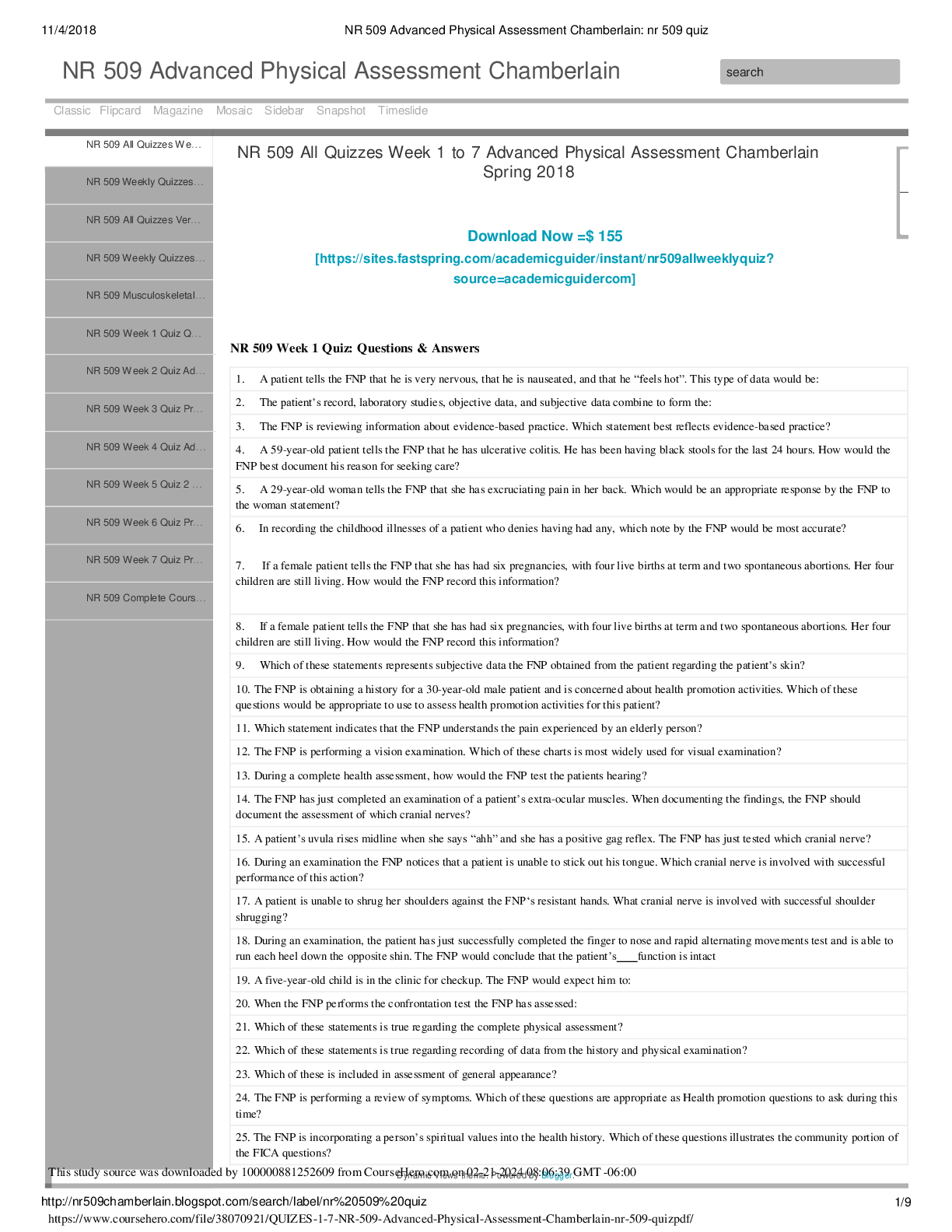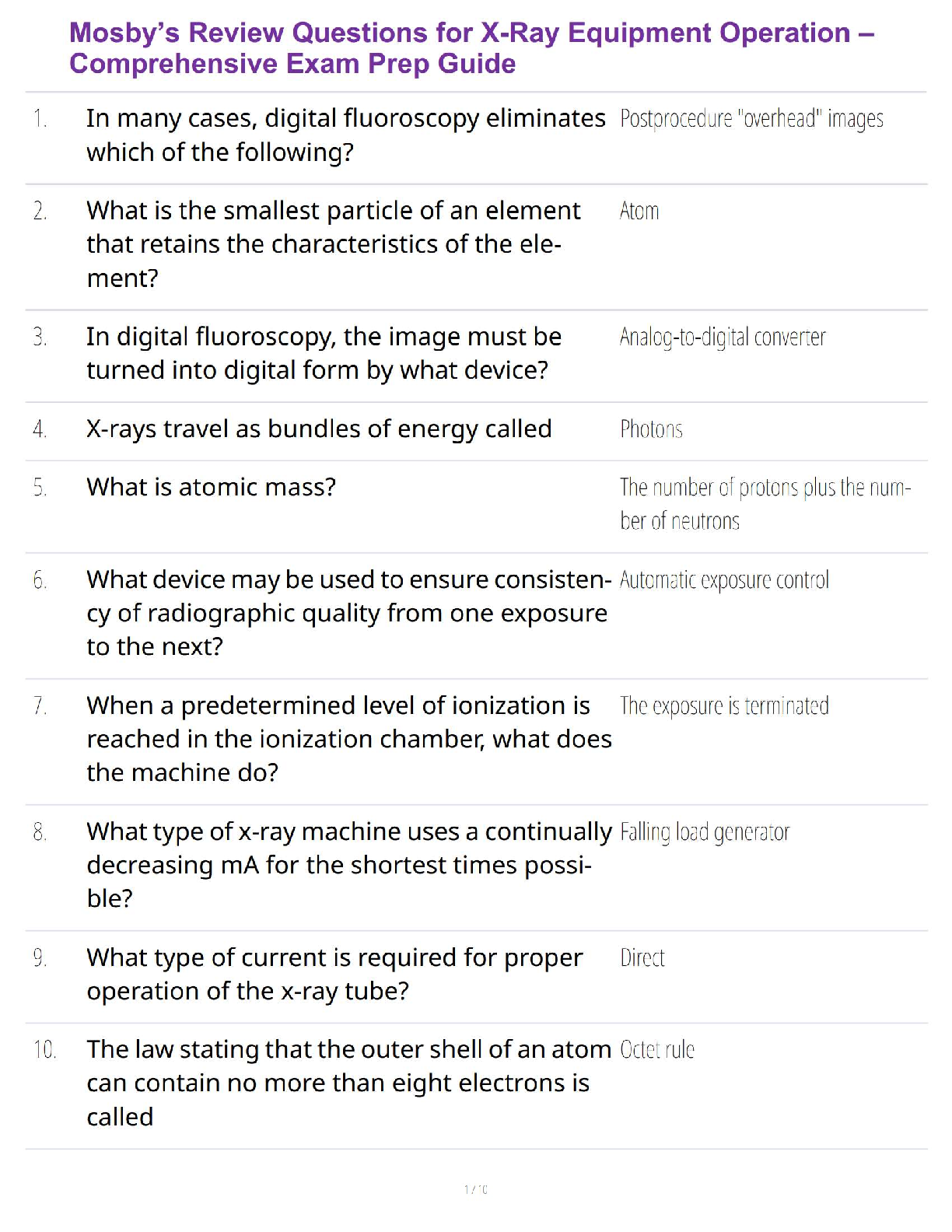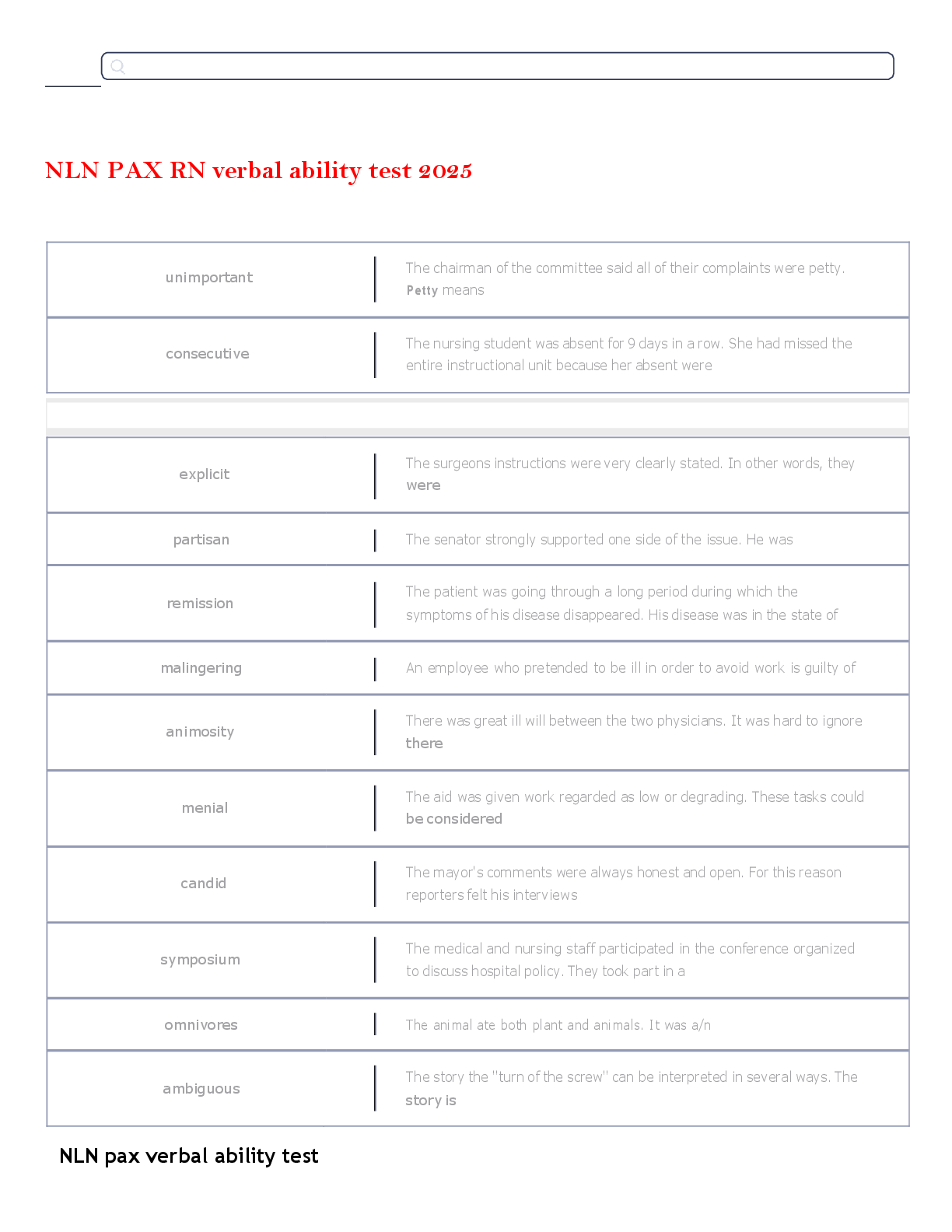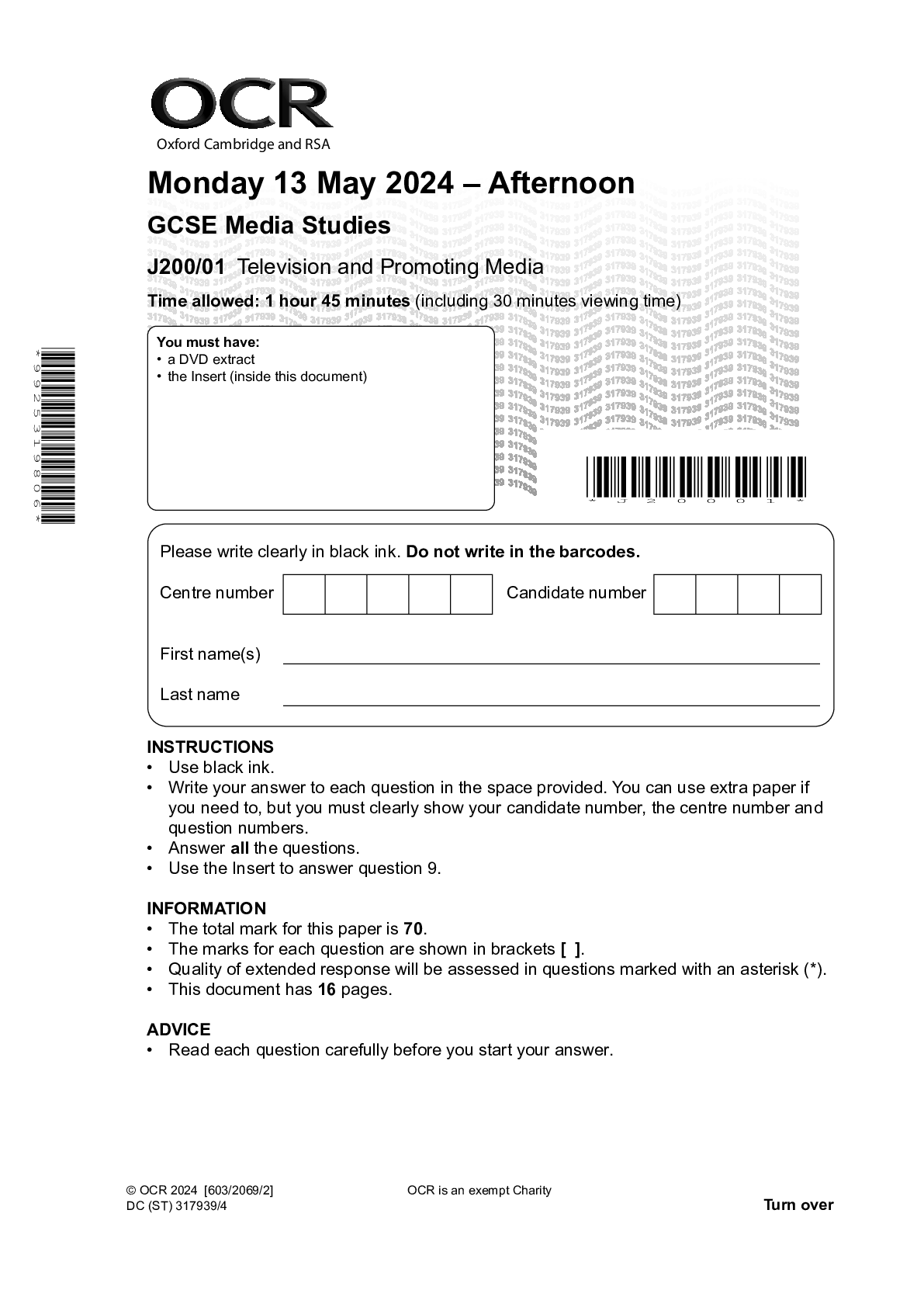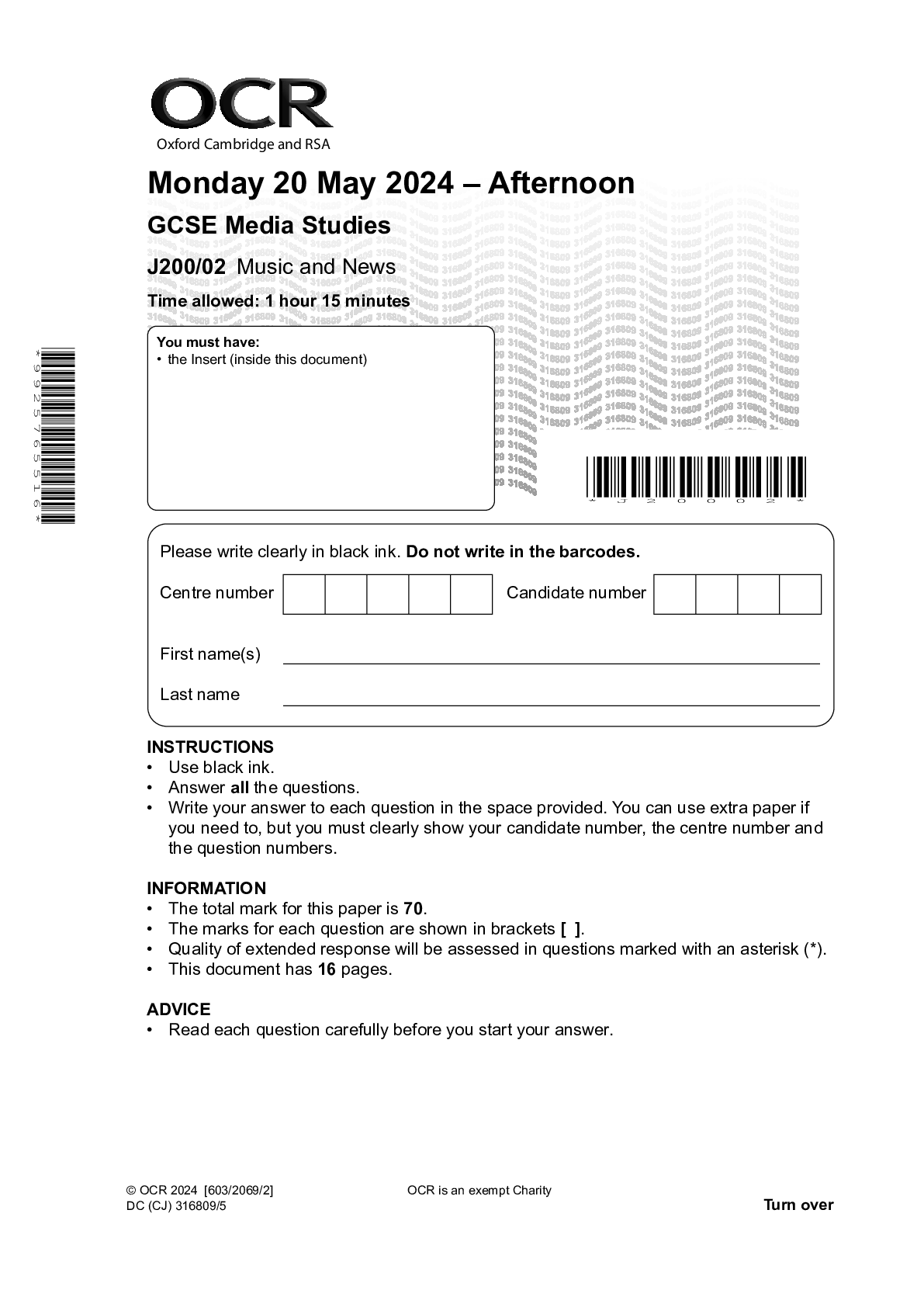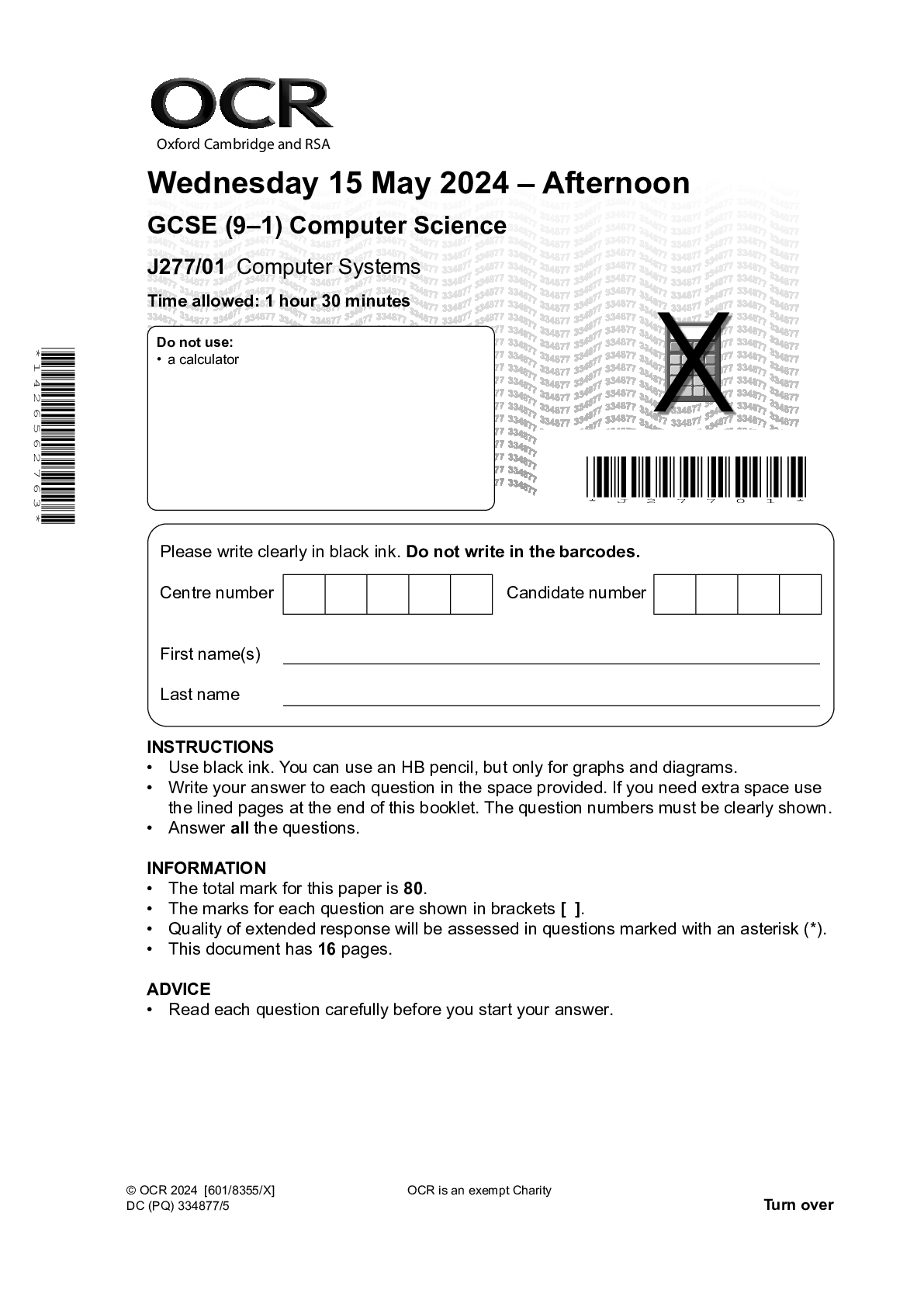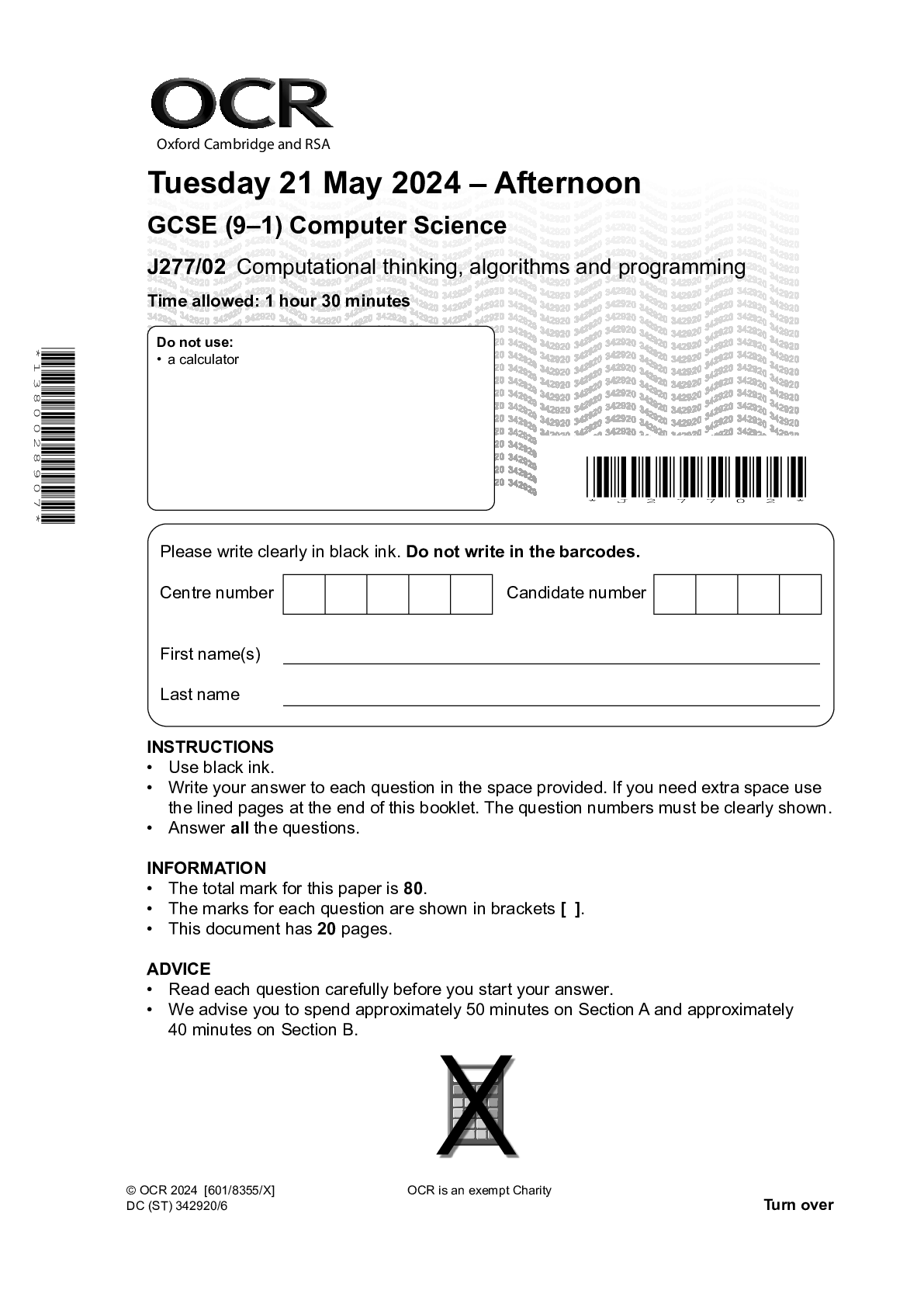Pharmacology for Nursing Care > QUESTION PAPER (QP) > NR 508 Drugs Affecting the Integumentary System – Download For Revision (All)
NR 508 Drugs Affecting the Integumentary System – Download For Revision
Document Content and Description Below
NR 508 Drugs Affecting the Integumentary System – Download For Revision Multiple Choice Identify the choice that best completes the statement or answers the question. 2 1. Erik presents w ... ith one golden-crusted lesion at the site of an insect bite consistent with impetigo. His parents have limited finances and request the least expensive- treatment. Which medication would be the best choice for treatment? 1. Mupirocin (Bactroban) 2. Bacitracin and polymixin B (generic double antibiotic oint- ment) 3. Retapamulin (Altabax) 4. Oral cephalexin (Keflex) 2 2. Juakeem is a nasal methicillin resistant staphylococcus aureus (MRSA) carrier. Treatment to eradicate nasal MRSA is mupirocin. Patient education regarding treat- ing nasal MRSA includes: 1. Take the oral medication exactly as prescribed. 2. Insert one-half of the dose in each nostril twice a day. 3. Alternate treating one nare in the morning and the other in the evening. 4. Nasal MRSA eradication requires at least 4 weeks of therapy, with up to 8 weeks needed in some patients. 3_ 3. Instructions for applying a topical antibiotic or antiviral ointment include: 1. Apply thickly to the infected area, spreading the medication well past the borders of the in- fection. 2. If the rash worsens, apply a thicker layer of medication to settle down the infection. 3. Wash hands before and after ap- plication of topical antimicrobials. 4. None of the above 3_ 4. When Sam used clotrimazole (Lotrimin AF) for athlete’s foot he developed a red, itchy rash consistent with a hypersensitivity reaction. He now has athlete’s foot again. What would be a good choice of antifungal for Sam? 1. Miconazole (Micatin) powder 2. Ketoconazole (Nizoral) cream 3. Terbinafine (Lamisil) cream 4. Griseofulvin (Grifulvin V) suspen- sion 4 5. When prescribing griseofulvin (Grifulvin V) to treat tinea capitis it is critical to in- struct the patient or parent to: 1. Mix the griseofulvin with ice cream before administering 2. Take the griseofulvin until the tinea clears, in approximately 4 to 5 weeks 3. Shampoo with baby shampoo daily while taking the griseofulvin 4. Griseofulvin is best absorbed if ingested with a high-fat food. 1_ 6. First-line therapy for treating topical fungal infections such as tinea corporis (ring- worm) or tinea pedis (athlete’s foot) would be: 1. OTC topical azole (clotrimazole, miconazole) 2. Oral terbinafine 3. Oral griseofulvin microsize 4. Nystatin cream or ointment 2 7. When prescribing topical penciclovir (Denavir) for the treatment of herpes labialis (cold sores) patient education would include: 1. Spread penciclovir liberally all over lips and area surrounding lips. 2. Penciclovir therapy is started at the first sign of a cold sore out- break. 3. Skin irritation is normal with pen- ciclovir and it should resolve. 4. The penciclovir should be used a minimum of 2 weeks to prevent recurrence. 3 8. Erika has been prescribed isotretinoin (Accutane) by her dermatologist and is pre- senting to her primary care provider with symptoms of sadness and depression. A Beck’s Depression Scale indicates she has mild to moderate depression. What would be the best care for her at this point? 1. Prescribe a select serotonin reup- take inhibitor (SSRI) antidepres- sant 2. Refer her to a mental health therapist 3. Contact her dermatologist about discontinuing the isotretinoin 4. Reassure her that mood swings are normal and schedule follow up in a week 2 9. Drew is a 17-year-old competitive runner who presents with complaint of pain in his hip that occurred after he fell while running. His only medical problem is severe acne for which he takes isotretinoin (Accutane). With this history what would you be concerned for? 1. He may have pulled a muscle and needs to rest to recover. 2. He is at risk for bone injuries and needs to be evaluated for frac- ture. 3. Isotretinoin interacts with ibupro- fen which is the pain medication of choice. 4. Teen athletes are at risk for repetitive stress injuries. 4_10. Catherine calls the clinic with concerns that her acne is worse 1 week after starting topical tretinoin. What would be the appropriate care for her? 1. Change her to a different topical acne medication as she is having an adverse reaction to the tretinoin. 2. Switch her to an oral antibiotic to treat her acne. 3. Advise her to apply an oil-based lotion to her face to soothe the redness. 4. Reassure her that the worsening of acne is normal and it should improve with continued use. 3 11. Li is a 6-month-old infant with severe eczema. She would benefit from topical corti- costeroid therapy. Instructions for using topical corticosteroids in children include: 1. Apply liberally to all areas with eczema. 2. Double the frequency of applica- tion when the eczema is severe. 3. Apply sparingly to eczema areas. 4. Cover the eczema area with an occlusive dressing after applying a corticosteroid. _2 12. Jose has had eczema for many years and reports that he thinks his corticosteroid cream is not working as well as it was previously. He may be experiencing toler- ance to the corticosteroid. Treatment options include: 1. Increase the potency of the corti- costeroid cream. 2. Recommend an interrupted or cyclic schedule of application. 3. Increase the frequency of dosing of the corticosteroid. 4. Discontinue the corticosteroid because it isn’t working any longer . 3 13. When prescribing tacrolimus (Protopic) to treat atopic dermatitis patients should be informed that: 1. Tacrolimus is the most effective if it is used continuously for 4 to 6 months. 2. Tacrolimus should be spread gen- erously over the affected area. 3. The FDA has issued a Black Box warning about the use of tacrolimus and the development of cancer in animals and hu- mans. 4. The FDA recommends patients be screened for cancer before prescribing tacrolimus. 3 14. Patients who are treated with greater than 100 grams per week of topical cal- cipotriene for psoriasis need to be monitored for: 1. High vitamin D levels 2. Hyperkalemia 3. Hypercalcemia 4. Hyperuricemia 1 15. Jesse is prescribed tazarotene for his psoriasis. Patient education regarding topical tazarotene includes instructing them: 1. That tazarotene is applied in a thin film to the psoriasis plaque lesions 2. To apply it liberally to all psoriatic lesions 3. To apply tazarotene to nonaf- fected areas to prevent breakout 4. That tazarotene may cause hy- percalcemia if it is overused 4 16. Instructions for the use of selenium sulfide shampoo (Selsun) to treat scalp sebor- rhea include: 1. Shampoo daily and rinse well. 2. Worsening of seborrhea for the first week is normal. 3. Seborrhea usually clears up after a few weeks of treatment. 4. Shampoo twice a week for 2 weeks, then weekly. 3 17. Topical diphenhydramine (Benadryl) is available OTC to treat itching. Patients or parents should be instructed regarding the use of topical diphenhydramine that: 1. For maximum effectiveness in treating itching, combine topical with oral diphenhydramine. 2. Topical diphenhydramine is the treatment of choice in treating poison ivy or poison oak. 3. Topical diphenhydramine should not be used in children younger than age 2 years. 4. When applying topical diphenhy- dramine, apply the cream liber- ally to all areas that itch. 1 18. A patient has been prescribed silver sulfadiazine (Silvadene) cream to treat burns on his leg. Normal adverse effects of silver sulfadiazine cream include: 1. Transient leukopenia on days 2 to 4 that should resolve 2. Worsening of burn symptoms briefly before resolution 3. A red, scaly rash that will resolve with continued use 4. Hypercalcemia 3 19. Instructions for the use of malathion (Ovide) for head lice include: 1. Use a blow dryer to dry the hair after applying. 2. Malathion (Ovide) is used daily for a week until all lice are dead. 3. Rinse the malathion (Ovide) off and shampoo hair after 8 to 12 hours. 4. Use gloves to apply the malathion (Ovide). 1 20. When writing a prescription of permethrin 5% cream (Elimite) for scabies, patient education would include: 1. All members of the household and personal contacts should also be treated. 2. Infants should have permethrin applied from the neck down. 3. The permethrin is washed off af- ter 10 to 20 minutes. 4. Permethrin is flammable and to avoid open flame while the medi- cation is applied. Chapter 23. Drugs Affecting the Integumentary System Answer Section [Show More]
Last updated: 1 year ago
Preview 3 out of 7 pages

Loading document previews ...
Buy this document to get the full access instantly
Instant Download Access after purchase
Buy NowInstant download
We Accept:

Reviews( 0 )
$12.00
Can't find what you want? Try our AI powered Search
Document information
Connected school, study & course
About the document
Uploaded On
Jul 05, 2024
Number of pages
7
Written in
All
Additional information
This document has been written for:
Uploaded
Jul 05, 2024
Downloads
0
Views
87

